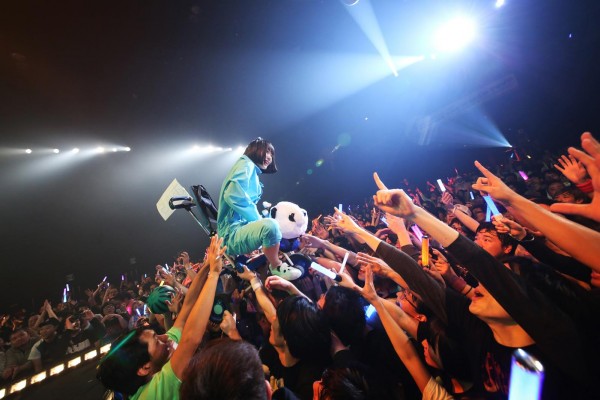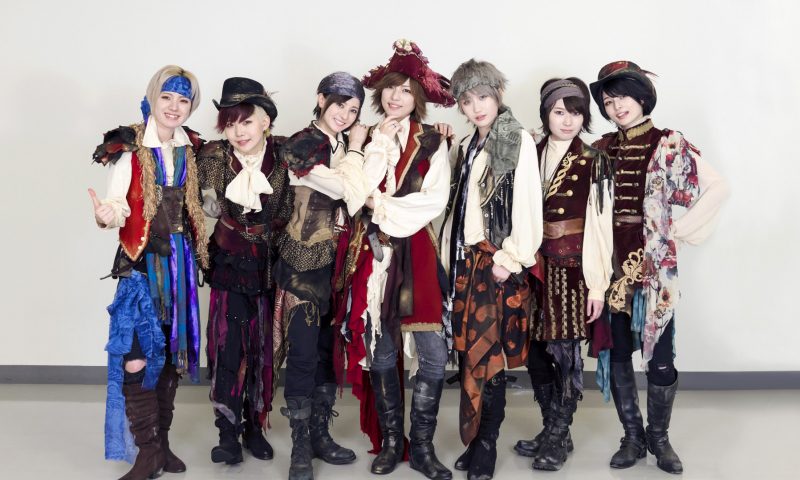
A Marvelous Show is About to Begin! The Hoopers’ 2nd Album “FANTASIC SHOW”


Sponsored Links
Mayu Tomita, 20-year old singer-songwriter and former idol was tragically stabbed in the neck and chest by Tomohiro Iwazaki, 27, shortly before she was to take the stage at Event Space Solid in Musashi-Koganei, Tokyo on May 21, 2016. Tomita remains in critical condition and Iwazaki has been arrested.
Many of the media outlets who have reported on this incident, including many here in Japan, have been referring to Tomita as a “pop star” or “idol” and her assailant as a “fan”, even comparing it to when Rina Kawaei, Anna Iriyama, and a staff member were slashed during an AKB48 handshake event held in Iwate in 2014. These are not completely true but, the mass media is known for exaggerating in order to stir public interest and gain views. Sadly, it seems that other cases where women were stalked and killed have not received the same level of attention. However, we would like to take this time to find out more about who Mayu Tomita is and address the serious issue of stalking in Japan at this time.
First of all, here are some of the details about Mayu Tomita that we have found. Although Tomita (冨田真由) shares the same romanized name as former 5th generation AKB48 Kenkyuusei (冨田麻友), they are not the same person. Tomita was in an idol group named Secret Girls which was part of a Fuji TV drama (2011 – 2012) of the same name. Also in the group were current THE HOOPERS member Nanami Mitsuhashi (aka SENA) and former Idoling!!! members Nao Asahi, Kaede Hashimoto, and Yuna Ito.
Tomita also appeared in the 2010 NHK drama “Ichigo to Senbei” and the first episode of 2011’s “Kamen Rider Forza” as well as several stage plays. She made a brief appearance in the MV for rock band Galileo Galilei’s 1st single “Natsuzora” (release date: June 9, 2010). She began activities as a singer-songwriter during late 2015, performing in small live houses and restaurants.
The problem with stalking in Japan lies with the current anti-stalking laws which do little to protect the victims. The current laws do not include cyberstalking via social media. The suspect is simply given a verbal warning upon their first offense and a written warning for their second offense. Tomita had approached police in Musashino on May 9th to have them stop Iwazaki from harassing her and her mother had contacted Kyoto police (where Iwazaki was reported to have been living) on May 4th. No immediate action was taken by the police as they did not interpret the messages as threatening and had to confirm whether it was actually Iwazaki who has been sending the messages.

On October 8, 2013, high school student and aspiring actress Saaya Suzuki, 18, was stabbed to death in her home in Mitaka, Tokyo by ex-boyfriend Charles Thomas Ikenaga, 21. She had received death threats from Ikenaga earlier in the month and she had even gone to the police station on the morning of her murder after he had been seen outside of her home. Police called the Ikenaga’s phone 3 times and upon receiving no answer, took no further action. It was later learned that the phone did not even belong to him. Ikenaga was sentenced to 22 years in prison as a result but, the Suzuki family will never get their daughter back.
The anti-stalking laws need to be revised to include social media and allow for stricter punishment for offenders as the number of stalking cases in Japan have been rising in recent years. The other issue when it comes to dealing with stalkers is that majority of the police force are male and the majority of the victims are female. Is it too much to assume that what one of them would not find threatening could be downright terrifying to the person being stalked?
While not exclusively restricted to idols, many celebrities build their fan bases through constant interaction with them, on social media as well as in person. With so many different venues of different sizes scattered all over the place, there are no standards for security. This provides a wide array of unique experiences for fans and performers alike but also presents several risks as well. For the most part, security is far less strict than that for concerts or events in other countries as attendees tend to conduct themselves properly. This allows for performer and audience member to be closer than they would under different circumstances. In the case of artists who go into the audience, they do so with the understanding that no one will try to hurt them when they do.

As seen by the increase of security following the 2014 AKB48 incident, it is possible to provide safety for the performers but, having metal detectors and bag checks at every venue is not possible depending on how big or small the event is. In the case of Mayu Tomita, she was attacked right outside the venue.
Social media has provided many new opportunities for celebrities to promote themselves around the clock and not having to negotiate appearances on mainstream media like television or in magazines. With current technology, it’s possible to generate excitement with as little as a smartphone to post updates (Twitter, Facebook, blogs, etc.), upload pictures to Instagram, broadcast or record video to streaming (YouTube, Ustream, Tweetcast, Periscope, etc.) or sharing sites (YouTube, Nico Nico, Vine, Snapchat,Musical.ly, etc.). While there are some services which allow for reciprocal relationships, for the most part, the celebrity assumes the position of the broadcaster with their followers as the audience, creating a parasocial relationship. It’s almost as if “The Truman Show” (1998) has become our new reality. However, the increase of content for people to consume also increases the chances for delusional behavior.

Even before the mobile Internet came along, delusional fans have turned violent as shown in the case of John Lennon being shot to death by Mark David Chapman in New York City on December 8, 1980. Chapman had originally idolized Lennon but grew increasingly disillusioned and angry with the singer-songwriter, leading to the fatal shooting just hours after the two had met, Lennon having shook Chapman’s hand and signing an album for him. Twenty-four years later in 2004, former Pantera guitarist Dimebag Darrell was shot dead in an Ohio nightclub by Nathan Gale, a former Marine.
It’s an easy target to blame the way that celebrities, Japanese idols in particular, are marketed as the cause of obsessive fan/stalker behavior leading to attacks like the one inflicted on Mayu Tomita. Fans are not normal. Is it normal for Takarazuka fans to line the streets outside of a theater and wait for their favorite musumeyaku or otokoyaku to appear? Was it normal for “Deadheads” to follow The Grateful Dead wherever they went to perform? Is it normal for fans to buy thousands of CDs just to go to an AKB48 handshake event or vote in an election every year?
While there is no clear answer to why some fans can turn into stalkers, mental health issues, social anxiety, frustration, and false feelings of entitlement may be several factors. Satoru Umeta, who was sentenced to 6 years in prison following the Iwate slashing incident, admitted that he had been motivated by jealousy at how much the members of AKB48 made, having been unemployed at the time. As mentioned earlier, Tomita’s attacker had expressed frustration at not being acknowledged by her and felt as if she was looking down on him. In the case of Saaya Suzuki, it was her ex-boyfriend.
How many more people being stalked have to be attacked before something is done to protect them better? Following the stalking and murder of university student Shiori Iino in 1999, the anti-stalking laws were amended to make following and harassment via telephone and fax illegal. They were amended again in 2013 to include e-mail harassment, but the criminalization of harassment and stalking via social media has yet to be included. The world continues to change at a rapid pace and with it come new ways to reach people as well as to hurt them. It is truly unfortunate that young women like Mayu Tomita had to be hurt so badly for the world to take notice. We just hope that it is not a change that she has to pay for with her life.
Sponsored Links

“I Prefer Dianna Agron Over Einstein” : Is Charm Valued Over Cleverness in Japan?

Risa Satosaki Reveals Everything in the MV for “S!NG”!



